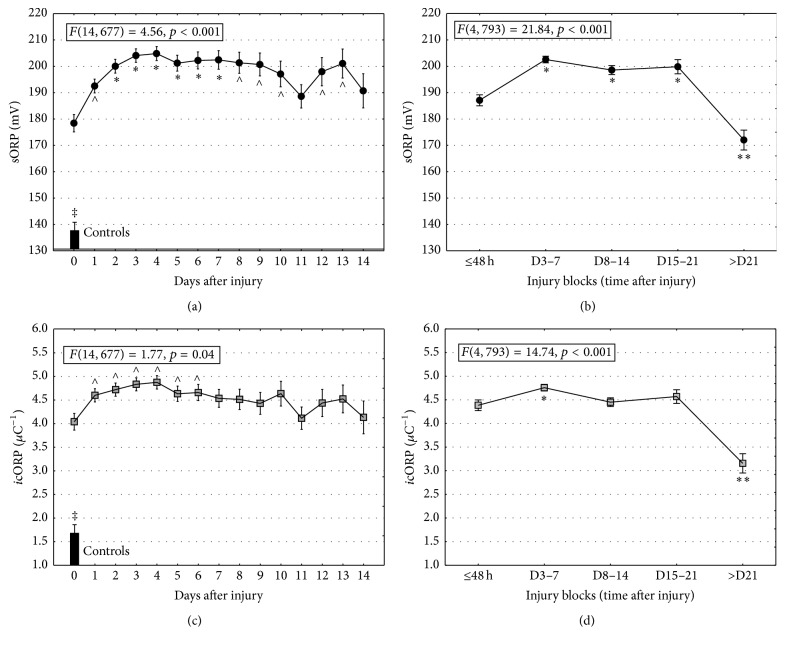Figure 2.
ORP values are higher in TBI than controls and increase in the first few days after injury. (a) Daily changes in sORP indicated significant increases in the first two days after injury and remain reliably high through at least 10 days. Bars represent mean sORP values from healthy controls. (b) Extending the analysis by blocks of time, sORP remains elevated through three weeks (D: days; D15–21). (c) Daily changes in icORP revealed a significant increase (a decrease in antioxidant capacity) in the first day after injury. This steady elevation remains at least through six days after injury. Bars represent mean icORP values from healthy controls. (d) Blocks of data suggested that icORP does not decrease (recovery of antioxidant capacity), until three weeks after injury (D15–21). Data are presented as means ± standard error of the mean (sem); ∧ represents significantly greater than day of injury (day 0); ∗ indicates significantly greater than day of injury and day 1; ∗∗ indicates significantly lower than the first 48 hrs after injury; p < 0.05; ‡ means significantly less than TBI.

